2025 年には、精密農業と持続可能な慣行の革新により、芝散布機市場が急成長するでしょう。この記事では、芝散布機の種類、性能、最新の技術機能について詳しく解説し、プロのバイヤーに情報に基づいた購入決定を行うための貴重な洞察を提供します。
目次:
– 2025年の芝刈り機市場の包括的な分析
– 芝刈り機を選ぶ際の重要な要素
– 耐久性と品質
– 安全基準と認証
– 適切な散布機で芝生の健康を向上
– 芝刈り機についての最終的な考察
2025年の芝刈り機市場の包括的な分析
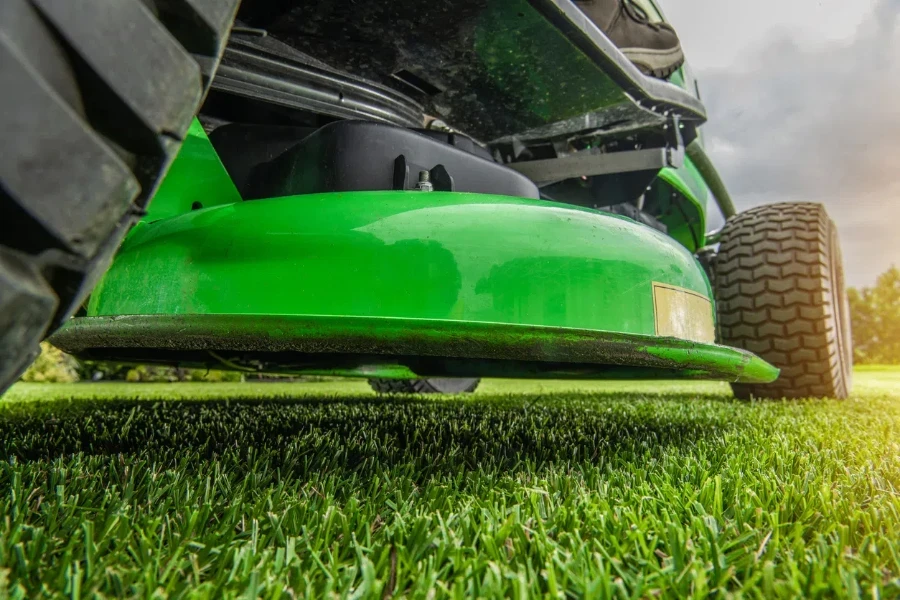
市場概観
近年、世界の散布機市場は著しい成長と多様化を遂げています。2025年までに市場規模は1.07億6.63万米ドルに達し、2023年から2030年までの年平均成長率(CAGR)はXNUMX%になると予想されています。この成長は、精密農業における技術的進歩と持続可能な農業慣行の採用の増加によって促進されています。市場には、ドロップ式、ドライ式、液体式、振り子式など、さまざまなタイプの散布機が含まれています。ロータリー式散布機は、その汎用性と効率性により、大きな市場シェアを占めています。
地域的には、大規模な商業農業とスマート農業ソリューションの統合により、南北アメリカ、特に米国とカナダが市場を支配しています。中国、インド、日本などの国があるアジア太平洋地域は、持続可能な農業を推進する政府の取り組みと多額の研究開発投資により、急速な成長を遂げています。ヨーロッパでは、市場は厳しい環境規制と炭素排出量の削減への強い重点の影響を受けています。
詳細な市場紹介と分析
現代の農業や造園業では、肥料、種子、その他の資材を均等に散布する散布機が欠かせません。散布機の主な性能基準には、散布幅、散布率、キャリブレーションの容易さなどがあります。市場の動向は、投入資材の使用を最適化し、無駄を最小限に抑えるために精密農業技術と統合された高効率機器の需要によって推進されています。
草散布機市場に対する経済的影響には、投入コストの上昇があり、より効率的な施肥方法の必要性が高まっています。さらに、消費者の行動は環境に優しく持続可能な農業慣行へと移行しており、高度な散布機の需要が高まっています。流通チャネルは進化しており、互換性と信頼性を確保するために OEM (Original Equipment Manufacturer) が好まれる傾向が高まっています。
市場における最近のイノベーションには、高度な GPS およびセンサー技術を備えた散布機があり、正確な散布を可能にし、環境への影響を軽減します。デジタル化は重要な役割を果たしており、モバイル アプリケーションを介して制御および監視できるスマート散布機により、ユーザーの利便性と運用効率が向上します。
顧客の主な悩みは、高度な散布機の初期投資とメンテナンス費用の高さです。しかし、メーカーは、特定の土壌タイプ、作物、肥料に合わせたカスタマイズ可能なソリューションを提供することでこれらの問題に対処し、製品のライフサイクルとユーザー満足度を向上させています。差別化戦略は、製品の耐久性、使いやすさ、および他の農場管理システムとの統合に重点を置いています。
芝刈り機を選ぶ際の重要な要素
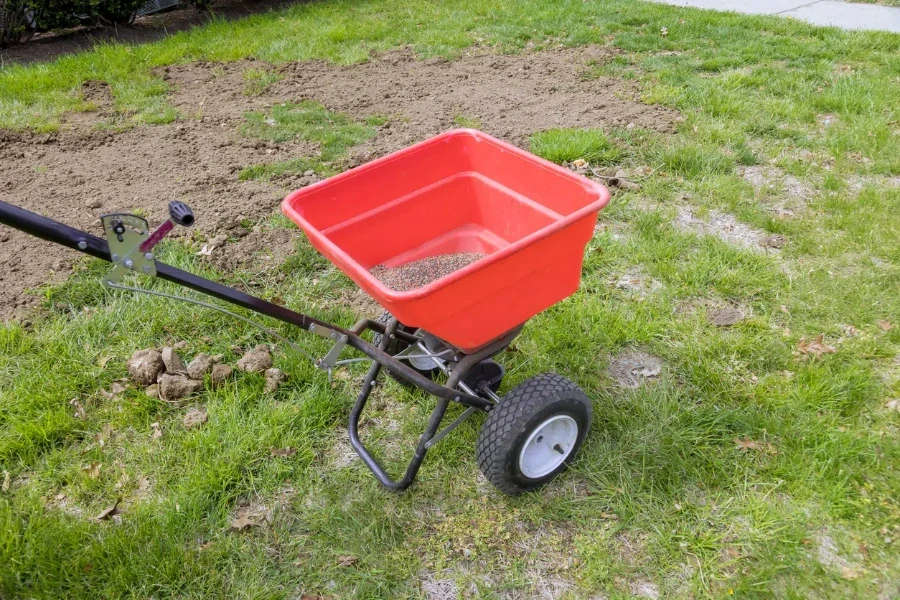
芝刈り機の種類
さまざまなタイプの芝散布機を理解することは、情報に基づいた決定を下すために重要です。芝散布機は一般に、ブロードキャスト散布機とドロップ散布機の 2 つの主なカテゴリに分類されます。
ロータリー式散布機とも呼ばれる散布機は、広い範囲を素早く散布するのに最適です。種子や肥料を広い範囲に散布し、より短時間でより広い範囲をカバーします。この散布機は、手で回したり、芝刈り機の後ろに牽引したりできます。ただし、散布範囲が広いため、特に風が強い状況では、散布範囲が不均一になることがあります。
ドロップスプレッダーを使用すると、より正確な散布が可能になります。スプレッダーの真下に種子や肥料を散布するため、散布したい場所に正確に散布できます。この精度により、ドロップスプレッダーは小さな芝生や散布をコントロールする必要があるエリアに最適です。ただし、散布幅が狭いため、広いエリアで使用するには時間がかかります。
パフォーマンスと機能性
芝散布機の性能と機能を評価するときは、散布幅、ホッパー容量、使いやすさなどの要素を考慮してください。
散布幅は、6 回の散布でどのくらいの面積をカバーできるかを決定します。ブロードキャスト スプレッダーは通常、12 フィートから 2 フィートの広い散布幅を提供するため、広い芝生に適しています。ドロップ スプレッダーは、3 フィートから XNUMX フィートの狭い散布幅で、より制御された散布が可能ですが、広い面積では散布が遅くなることがあります。
ホッパー容量は、散布機が保持できる種子や肥料の量を決定します。ホッパーが大きいほど、補充の頻度が減り、効率が向上します。たとえば、業務用の散布機のホッパー容量は最大 100 ポンドですが、小型の家庭用モデルでは 20 ポンドしか保持できない場合があります。
使いやすさには、調整可能な流量、人間工学に基づいたハンドル、読みやすいキャリブレーション設定などの機能が含まれます。高品質の散布機には、散布率を調整できる流量制御メカニズムが備わっていることが多く、芝生のニーズに合わせて適切な量の材料を散布できます。人間工学に基づいたハンドルは使用中の負担を軽減し、明確なキャリブレーション設定は散布の一貫性を保つのに役立ちます。
技術仕様
芝刈り機、特にプロ用または商業用の芝刈り機を選ぶ際には、技術仕様が重要です。これらの仕様には、芝刈り機の素材の種類、部品の耐久性、全体的な造りの品質などが含まれます。
高品質の散布機は、通常、ステンレス鋼や頑丈なプラスチックなどの耐腐食性材料で作られています。ステンレス鋼のフレームとホッパーは、特に厳しい気象条件において優れた耐久性と長寿命を提供します。たとえば、ステンレス鋼の散布機は、肥料やその他の化学物質にさらされても錆びることなく耐えることができ、より長い寿命を保証します。
車輪やギアなどの部品の耐久性も重要です。空気入りタイヤは、プラスチック製の車輪に比べて、起伏の多い地形でも優れた牽引力とスムーズな操作性を発揮します。金属製のギアは、一般的にプラスチック製のギアよりも耐久性と信頼性が高く、使用中に故障する可能性が低くなります。
全体的な製造品質は、多くの場合、業界の認定や賞を見ることで評価できます。厳格な業界基準を満たしているか、設計と性能が認められているスプレッダーは、優れた信頼性と効率性を備えている可能性が高くなります。
最新のテクノロジー機能
技術の進歩により、芝散布機の機能は大幅に向上しました。最新の散布機には、電子散布速度制御、GPS ベースの散布システム、散布パターンを追跡する統合ソフトウェアなどの機能が搭載されていることがよくあります。
電子散布率制御により、散布率を正確に調整できるため、芝生のさまざまな部分にわたって均一に散布できます。この機能は、均一性に高い基準を維持する必要があるプロの造園業者にとって特に便利です。
GPS ベースの散布システムは、衛星技術を使用して均一な散布を保証します。これらのシステムは散布マップを作成し、種子や肥料が散布された場所を正確に追跡できます。このレベルの精度により、散布しすぎや散布漏れを回避し、資材の使用を最適化して芝生の健康状態を改善できます。
統合ソフトウェア ソリューションは、散布パターンを追跡し、使用状況を監視し、将来の芝生管理作業に関する推奨事項を提供できます。これらの機能は、効率と精度が重要となる大規模な運用に特に役立ちます。
価格帯と予算
芝散布機の価格帯は、タイプ、製造品質、追加機能によって大きく異なります。基本的な住宅用モデルは 50 ドルから始まり、高級な商業用散布機は 500 ドルを超えることもあります。
予算を設定するときは、芝生やビジネスの具体的なニーズを考慮してください。小さな住宅の芝生の場合は、基本的な機能を備えた中価格帯の散布機で十分でしょう。しかし、より大規模な敷地やプロの造園ビジネスの場合は、高品質で機能豊富な散布機に投資することで、長期的な価値を高めることができます。
メンテナンスや交換部品のコストも考慮することが重要です。耐久性のある部品と信頼性の高い製造品質を備えたスプレッダーは、初期費用は高くなりますが、長期的なメンテナンス費用は低くなります。さらに、一部のメーカーは保証やサービス プランを提供しており、安心感を高め、投資を保護することができます。
耐久性とビルドの品質
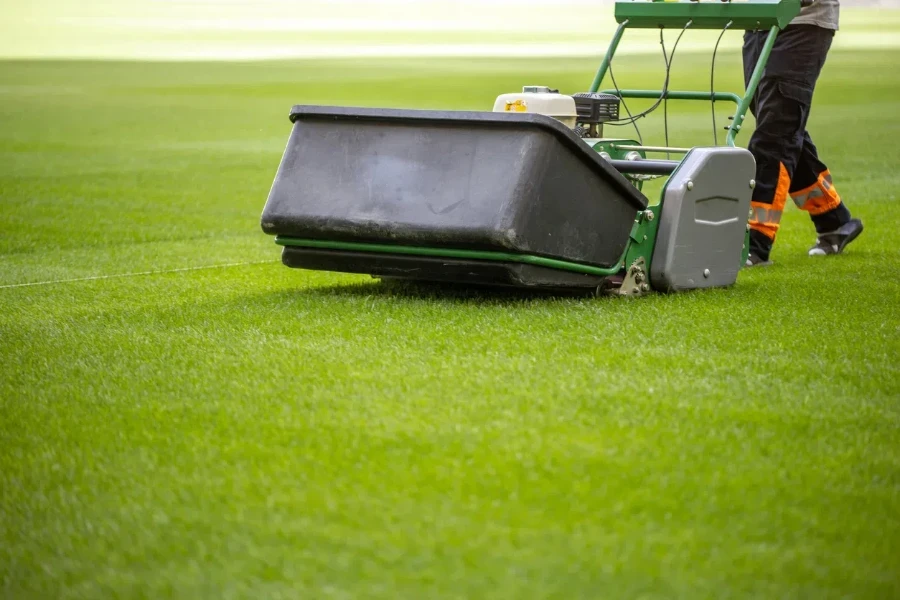
耐久性と造りの品質は、芝刈り機を選ぶ際に考慮すべき重要な要素です。高品質の素材と頑丈な構造により、芝刈り機は定期的な使用や風雨への露出にも耐えることができます。
材料の選択
材料の選択は、散布機の耐久性と寿命に直接影響します。フレームやホッパーには、錆びや腐食に強いステンレス鋼がよく使用されます。この材料は、腐食しやすい肥料と一緒に使用する散布機に特に有効です。頑丈なプラスチックも一般的な材料で、軽量でありながら耐久性に優れています。
車輪やギアなどの部品も耐久性のある素材で作られている必要があります。たとえば、空気入りタイヤはプラスチック製の車輪に比べて、不整地でも優れた牽引力とスムーズな操作性を発揮します。金属製のギアは一般にプラスチック製のギアよりも耐久性と信頼性が高く、故障の可能性を減らしてスプレッダーの寿命を延ばします。
建設品質
芝刈り機の全体的な構造品質は、多くの場合、設計と組み立てを調べることで評価できます。強化されたフレーム、頑丈な溶接、高品質の留め具を備えた芝刈り機を探してください。これらの機能は、芝刈り機が日常的な使用や乱暴な取り扱いに耐える能力に貢献します。
業界の認定や賞も、建設品質の指標となります。厳格な業界基準を満たしているか、設計や性能が認められているスプレッダーは、優れた信頼性と効率性を備えている可能性が高くなります。
メンテナンス要件
定期的なメンテナンスは、芝散布機の寿命と最適なパフォーマンスを確保するのに不可欠です。メンテナンス作業には、ホッパーと散布機の機構の清掃、可動部品の潤滑、ホイールやギアなどの部品の摩耗のチェックなどが含まれます。
一部の散布機はメンテナンスを考慮して設計されており、取り外しやすいホッパーやアクセスしやすいコンポーネントを備えています。これらの設計により、メンテナンス作業が簡素化され、ダウンタイムが短縮されます。さらに、メーカーがメンテナンス キットや交換部品を提供している場合もあり、散布機を良好な動作状態に保つのが容易になります。
安全規格と認証
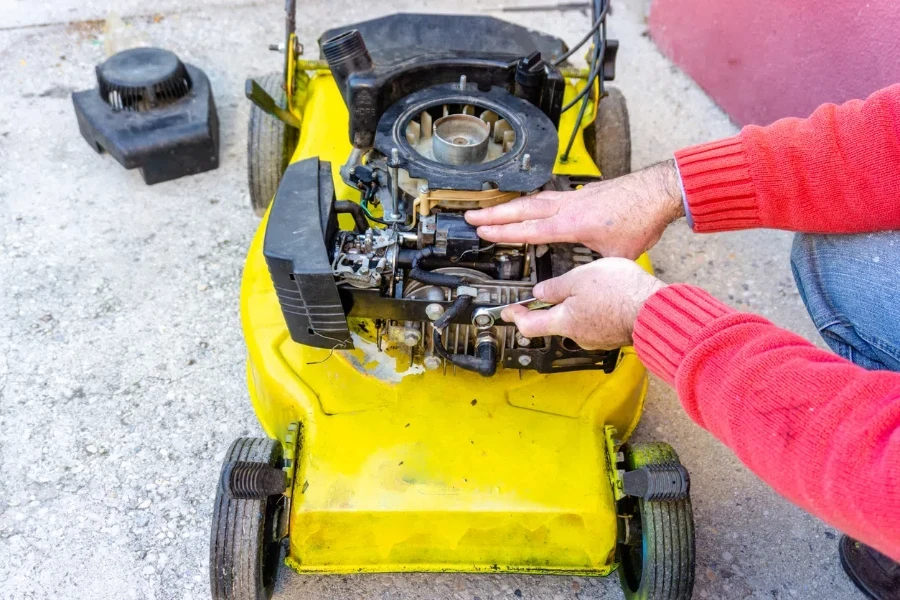
安全性は、特にプロや商業用途の芝散布機を選択する際に最も重要な考慮事項です。散布機が業界の安全基準と認証を満たしていることを確認することで、事故や怪我を防ぐことができます。
業界標準
芝散布機は、安全性と性能に関する関連業界標準に準拠する必要があります。これらの標準は、米国規格協会 (ANSI) や国際標準化機構 (ISO) などの組織によって設定される場合があります。これらの標準に準拠することで、散布機の安全性と信頼性がテスト済みであることが保証されます。
安全機能
現代の芝刈り機には、ユーザーや周囲の人を保護するための安全機能が装備されていることがよくあります。これらの機能には、可動部品との接触を防ぐ安全ガード、グリップを良くするための滑り止めハンドル、転倒を防ぐための安定したホイールベースなどが含まれます。
電動スプレッダーの場合、緊急停止スイッチや過負荷保護などの追加の安全機能により、安全性をさらに高めることができます。これらの機能は、事故を防ぎ、安全な操作を確保するのに役立ちます。
ユーザートレーニングとマニュアル
スプレッダーを安全に使用するには、適切なトレーニングと操作方法の理解が不可欠です。メーカーは通常、重要な安全情報、操作手順、メンテナンス ガイドラインを含むユーザー マニュアルを提供しています。スプレッダーを安全かつ効果的に使用するには、これらの手順を読んで従うことが重要です。
専門的または商業的な使用には、追加のトレーニングが必要になる場合があります。一部のメーカーは、ユーザーがスプレッダーの適切な操作とメンテナンスを理解できるように、トレーニング プログラムやリソースを提供しています。トレーニングに投資することで、事故を防ぎ、スプレッダーを安全かつ効果的に使用できるようになります。
適切な散布機で芝生の健康を増進する
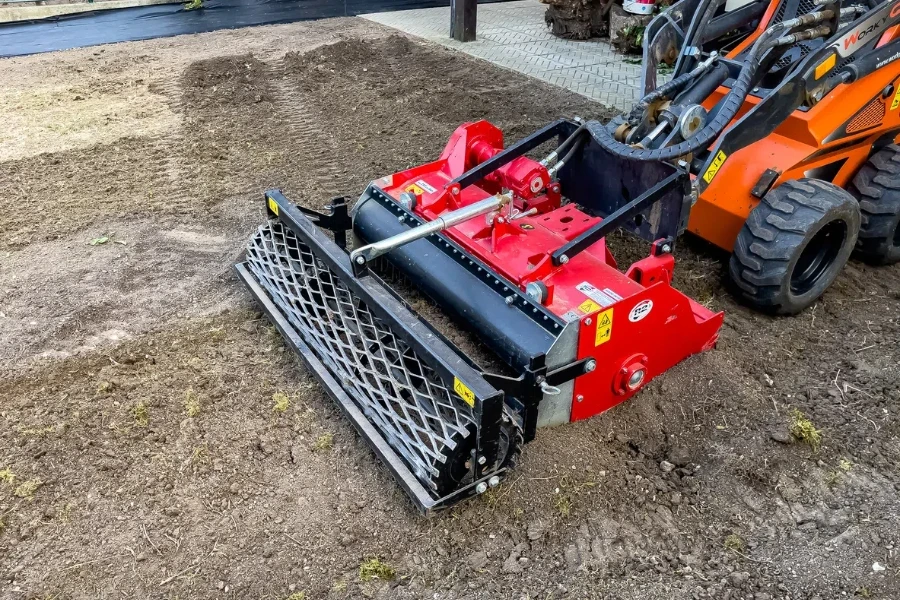
適切な散布機を使用すると、芝生の健康と見た目を大幅に向上させることができます。種子と肥料を適切に散布すると、芝生が均一に広がり、最適な成長条件が確保されます。
均等なカバレッジの促進
芝生散布機を使用する主な利点の 1 つは、均一な散布ができることにあります。種子や肥料を不均一に散布すると、芝生の成長が不均一になり、栄養バランスが崩れることがあります。散布機は、材料を均等に散布して均一な成長とより健康な芝生を促進するように設計されています。
散布機は広い範囲を素早くカバーするのに特に効果的ですが、散布機は小さな芝生や対象を絞った散布に精度を提供します。均一に散布することで、散布しすぎや散布漏れを防ぎ、資材の使用を最適化し、芝生の健康状態を改善します。
栄養分布の最適化
芝生を健康に保つには、適切な栄養の分配が不可欠です。肥料は、芝生の成長、根の発達、芝生全体の健康をサポートする必須栄養素を提供します。散布機を使用すると、これらの栄養素が均等に分配され、成長不良や病気につながる可能性のある栄養素の不均衡を防ぐことができます。
現代の散布機には、流量調整機能や電子散布量制御機能などの機能が備わっていることが多く、肥料を正確に散布できます。これらの機能により、適切な量の栄養素が確実に散布され、最適な生育条件が促進されます。
土壌の圧縮を軽減する
土壌の圧縮は根の成長を妨げ、芝生への水分と栄養分の供給を減少させます。散布機を使用すると、資材を均等に散布し、重機の必要性を最小限に抑えることで、土壌の圧縮を軽減できます。
さらに、散布機の中には、エアレーターやその他の芝生管理機器と連動して作動するように設計されています。エアレーションは土壌に小さな穴を開け、水、空気、栄養素が根域のより深いところまで浸透できるようにすることで、土壌の圧縮を緩和するのに役立ちます。散布機とエアレーションを組み合わせて使用すると、土壌の健康状態が向上し、芝生の成長が促進されます。
芝刈り機についての最終的な考察
芝生の健康で生き生きとした状態を保つには、適切な散布機を選ぶことが重要です。種類、性能、技術仕様、耐久性、安全基準、芝生の健康への影響などの要素を考慮することで、特定のニーズを満たす情報に基づいた決定を下すことができます。散布機を適切に使用し、メンテナンスすることで、最適な性能が確保され、芝生の長期的な健康維持につながります。
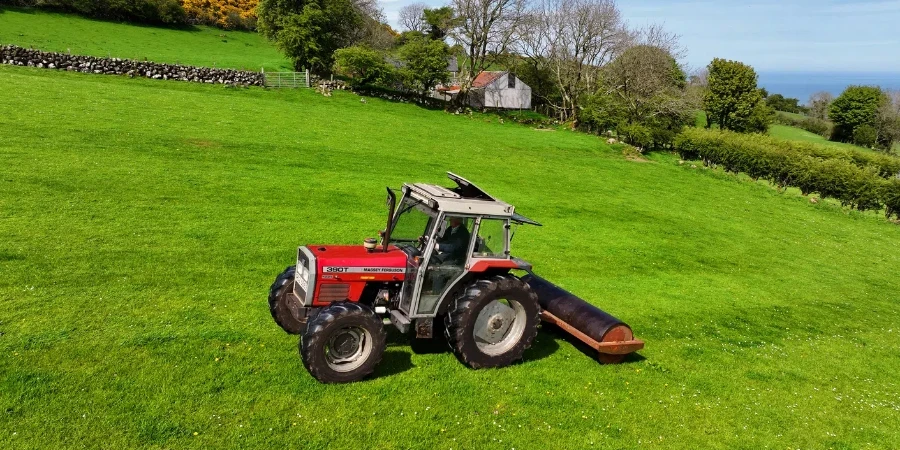




 Afrikaans
Afrikaans አማርኛ
አማርኛ العربية
العربية বাংলা
বাংলা Nederlands
Nederlands English
English Français
Français Deutsch
Deutsch हिन्दी
हिन्दी Bahasa Indonesia
Bahasa Indonesia Italiano
Italiano 日本語
日本語 한국어
한국어 Bahasa Melayu
Bahasa Melayu മലയാളം
മലയാളം پښتو
پښتو فارسی
فارسی Polski
Polski Português
Português Русский
Русский Español
Español Kiswahili
Kiswahili ไทย
ไทย Türkçe
Türkçe اردو
اردو Tiếng Việt
Tiếng Việt isiXhosa
isiXhosa Zulu
Zulu